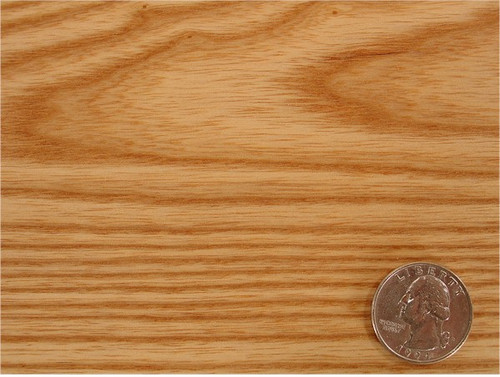Product Description
ASH LUMBER ROUGH CUTCommon Name(s): White Ash, American White Ash
Scientific Name: Fraxinus americana
Distribution: Eastern North America
Tree Size: 65-100 ft (20-30 m) tall, 2-5 ft (.6-1.5 m) trunk diameter
Average Dried Weight: 42 lbs/ft3 (675 kg/m3)
Specific Gravity (Basic, 12% MC): .55, .67
Janka Hardness: 1,320 lbf (5,870 N)
Modulus of Rupture: 15,000 lbf/in2 (103.5 MPa)
Elastic Modulus: 1,740,000 lbf/in2 (12.00 GPa)
Crushing Strength: 7,410 lbf/in2 (51.1 MPa)
Shrinkage: Radial: 4.9%, Tangential: 7.8%, Volumetric: 13.3%, T/R Ratio: 1.6
Color/Appearance: The heartwood is a light brown color, though darker shades can also be seen, which is sometimes sold as Olive Ash. Sapwood can be very wide, and tends to be a beige or light brown; not always clearly or sharply demarcated from heartwood.
Grain/Texture: Has a medium to coarse texture similar to oak. The grain is almost always straight and regular, though sometimes moderately curly or figured boards can be found.
Endgrain: Ring-porous; large earlywood pores 2-4 rows wide, small latewood pores solitary and radial multiples; tyloses common; parenchyma banded (marginal), paratracheal parenchyma around latewood pores vasicentric, winged and confluent; narrow rays, spacing normal.
Rot Resistance: Heartwood is rated as perishable, or only slightly durable in regard to decay. Ash is also not resistant to insect attack.
Workability: Produces good results with hand or machine tools. Responds well to steam bending. Glues, stains, and finishes well.
Odor: Can have a distinct, moderately unpleasant smell when being worked.
Allergies/Toxicity: Ash in the Fraxinus genus has been reported to cause skin irritation, and a decrease in lung function. See the articles Wood Allergies and Toxicity and Wood Dust Safety for more information.
Pricing/Availability: Ash is among the least expensive utility hardwoods available domestically; it should compare similarly to oak in terms of price.
Sustainability: This wood species is not listed in the CITES Appendices or on the IUCN Red List of Threatened Species.
Common Uses: Flooring, millwork, boxes/crates, baseball bats, and other turned objects such as tool handles.
Comments: White Ash has fairly good strength properties for its weight, and is also shock resistant.








